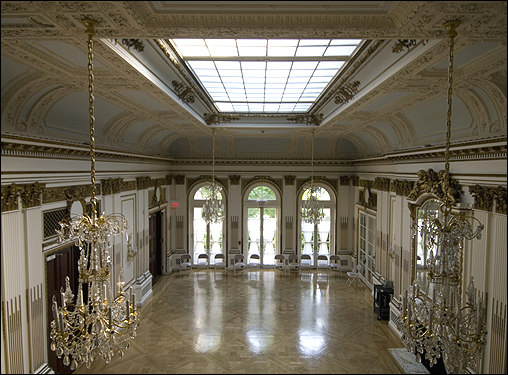statler
Senior Member
- Joined
- May 25, 2006
- Messages
- 7,938
- Reaction score
- 543
WANT!


LinkThe Globe said:One of Back Bay's grandest old dames soon to be for sale
By Kimberly Blanton, Globe Staff | August 3, 2007
Must-see Back Bay mansion! 13k sq.ft., five-story 8BR Classical Revival w/ big yrd, 14 fplc. Marble statue of Mercury, frescos, friezes, working fountain. Ballroom has four chandeliers, skylight. Price: $15 million PLUS.
The Boston Center for Adult Education says it's planning to sell the mansion at 5 Commonwealth Ave. it has owned since 1941, pending approval by its board later this month.
The Gamble mansion, as it's known, was built in the early 20th Century just steps from the Public Garden. But it seems to nod more to an earlier era of elaborate European palaces. The ballroom, for example, has gilt-trimmed walls and a ceiling reminiscent of the decorative styles French kings knew.
"It's one of the very last lavish houses in the district," said William Young, senior preservation planner for the Back Bay Architectural Commission. "It's such exquisite space you feel precious being in it."
The mansion was built in 1904 for a Harvard graduate and cotton trader, Walter C. Baylies; his daughter, Charlotte, had her debutante ball in the ballroom. The house is an architectural standout -- even on a street of brownstones and two Beaux Arts mansions that also happen to be for sale.
Beth Dickerson, a Back Bay real estate agent, estimated that 5 Commonwealth would fetch "north of $15 million."
The center paid $23,500 for the property in 1941.
The property, which is not yet listed, has an unusually large piece of land for the Back Bay: 9,950 square feet, according to city records. That makes it attractive to developers, who could expand the 13,000-square-foot structure and convert it to luxury condominiums, she said.
The center uses the building for its classes and rents out space for functions. But PJ Blankenhorn, the center's executive director, said costly upkeep and a lack of Internet connections in the classrooms are reasons to sell.
The center has a $2 million annual budget and would use the proceeds from the sale to modernize the classrooms at its other nearby building, located at 122 Arlington St.
"Our real mission is providing education opportunities" to adults, and selling the mansion, Blankenhorn said, "allows us to focus on that."
The nonprofit center's board is scheduled to vote on the proposed sale Aug. 16. No asking price has been determined yet.
Finding a buyer, however, may not be easy.
While the luxury market in downtown Boston is strong, it's difficult to sell such a large property in any market. Pricing the unique property is also a challenge, because there are so few comparable Back Bay properties on which to base a price.
Down the street, buildings at 128 and 130 Commonwealth Ave. are also for sale. Dickerson is marketing 128 Commonwealth on behalf of its owner, car dealer Herb Chambers. Last week, she dropped the asking price to $11.95 million, from $14.95 million.
Chicago auctioneer Sheldon Good & Co. was unable to sell the mansion at 130 Commonwealth in a June 28 auction. It is still on the market.
Executive vice president Michael Fine declined to comment on whether the owner, a British businessman, Deepak Kulkarni, received any bids.
"Properties at this price point are for a very thin market of buyers," Fine said.
Kimberly Blanton can be reached at blanton@globe.com.






